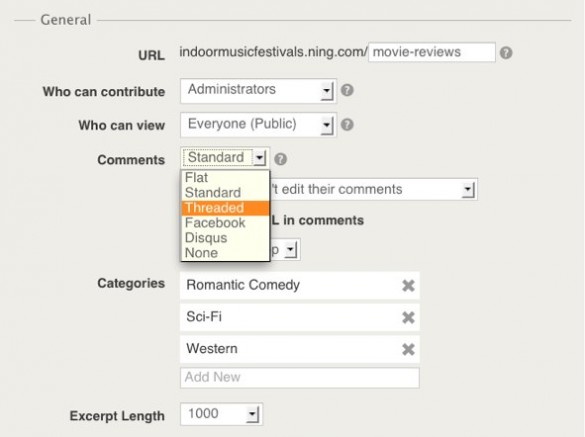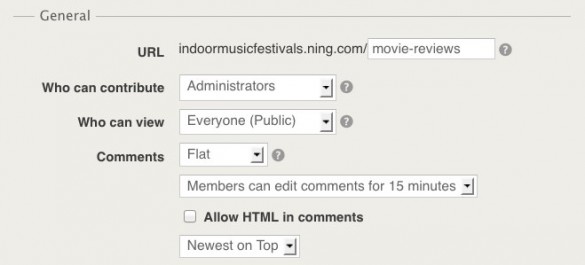When you add a new Blog, Forum or Photo page from the Site & Pages manager in the Social Site Manager, you can choose how you’d like to handle comments. This includes enabling native or social commenting systems or none at all.
Native comments include:
Flat – Comments display in chronological order.
Standard – Members can reply to other replies, with replies indented up to 2 levels deep.
Threaded – Members can reply to other replies, with replies indented up to 10 levels deep.
To learn more about native types of comments, see Types of Comments.
Social commenting systems will be visible if the feature can be viewed by everyone, members and non-members alike. If you aren’t seeing this option, change the “Who can view” drop-down menu to “Everyone.” To learn more about social commenting options, visit either link below:
Facebook – Enable commenting using a Facebook account
Disqus – Enable commenting using Disqus

For each Blog, Forum and Photo feature instance you create in the Site & Pages manager, you can set its own type of comments. You can choose whether or not to allow members to use HTML in their comments. Enabling HTML would allow for stylized fonts, images, links, and so on.
You can also give members the ability to edit their comments for a 15-minute window of time, indefinitely, or not at all. This will not affect members’ ability to delete their own comments, regardless of the setting specified for editing comments.

Finally, choose whether to set newest or oldest comments to appear on top. Showing newest comments on top makes sense for standard content, like Blogs or Photos, when you want the latest reactions up front. Showing oldest comments on top makes sense for Forum discussions, where you want to show the history and context of subsequent replies to keep the conversation going.
Be sure to click “Save” when you’re finished. You can always come back at a later date to make changes.


